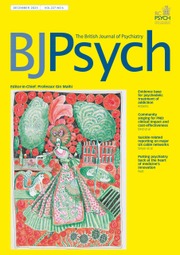I was interested to read Sayal et al's (Reference Sayal, Taylor and Beecham2002) article on pathways to care for children at risk of attention-deficit hyperactivity disorder (ADHD). By using Goldberg & Huxley's (Reference Goldberg and Huxley1980) pathway to care model I felt that the study oversimplified the complexity of professional input to this group of children, a point raised by the authors in their discussion. I think it is important, when considering improvements to services for children with ADHD, that the role of education is highlighted.
Teachers, as a profession, are well placed to observe children and are familiar with age-appropriate behavior. Indeed, Goodman et al (Reference Goodman, Ford and Simmons2000) found that teachers were more sensitive at identifying children with hyperactivity than were their parents. Although teachers' involvement in the assessment and monitoring of children with ADHD is well established (Dulcan et al, 1997), their role in identification is less clear. This is highlighted by the fact that only some child and adolescent mental health services (CAMHS) accept referrals directly from schools. By involving teachers in the identification of children with ADHD, access to children would improve from 74% seen in primary care to nearly 100%. This would significantly improve the sensitivity of any screening measure.
It is essential that CAMHS do not develop services for children in isolation, but instead utilise the skills of other professionals to improve care. If children with ADHD are to have their needs met, it is essential that we start to think outside of the medical model.



eLetters
No eLetters have been published for this article.